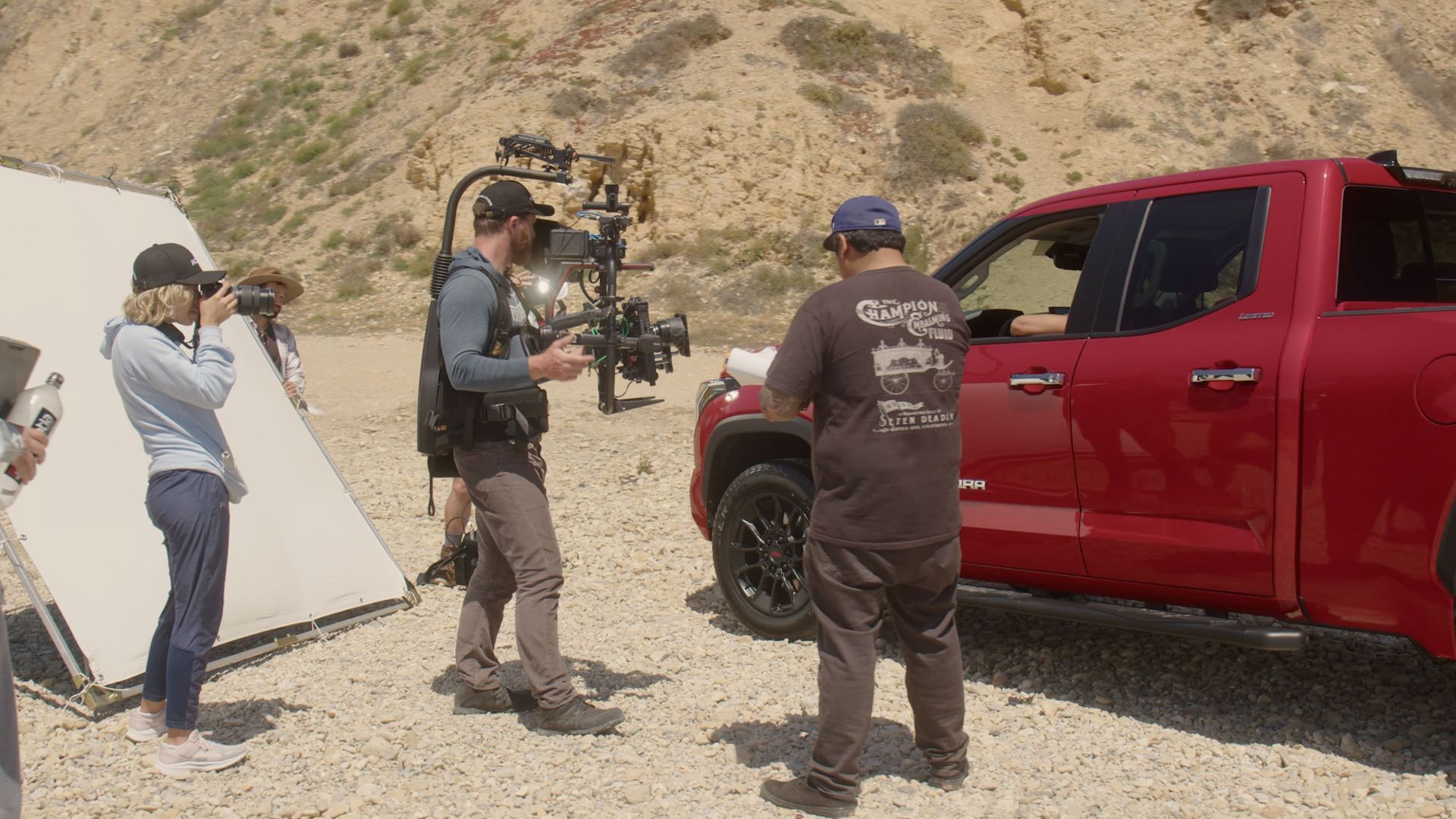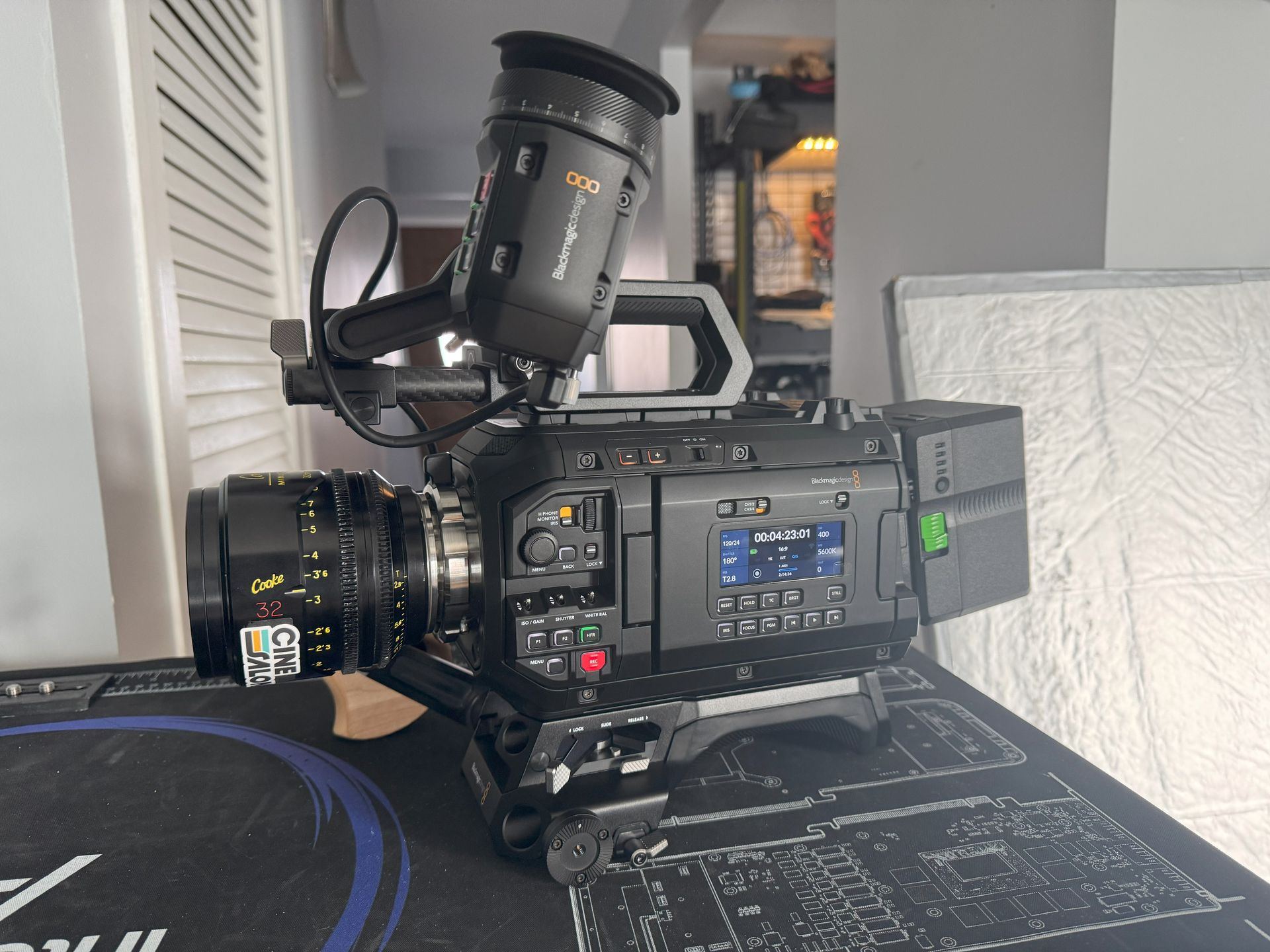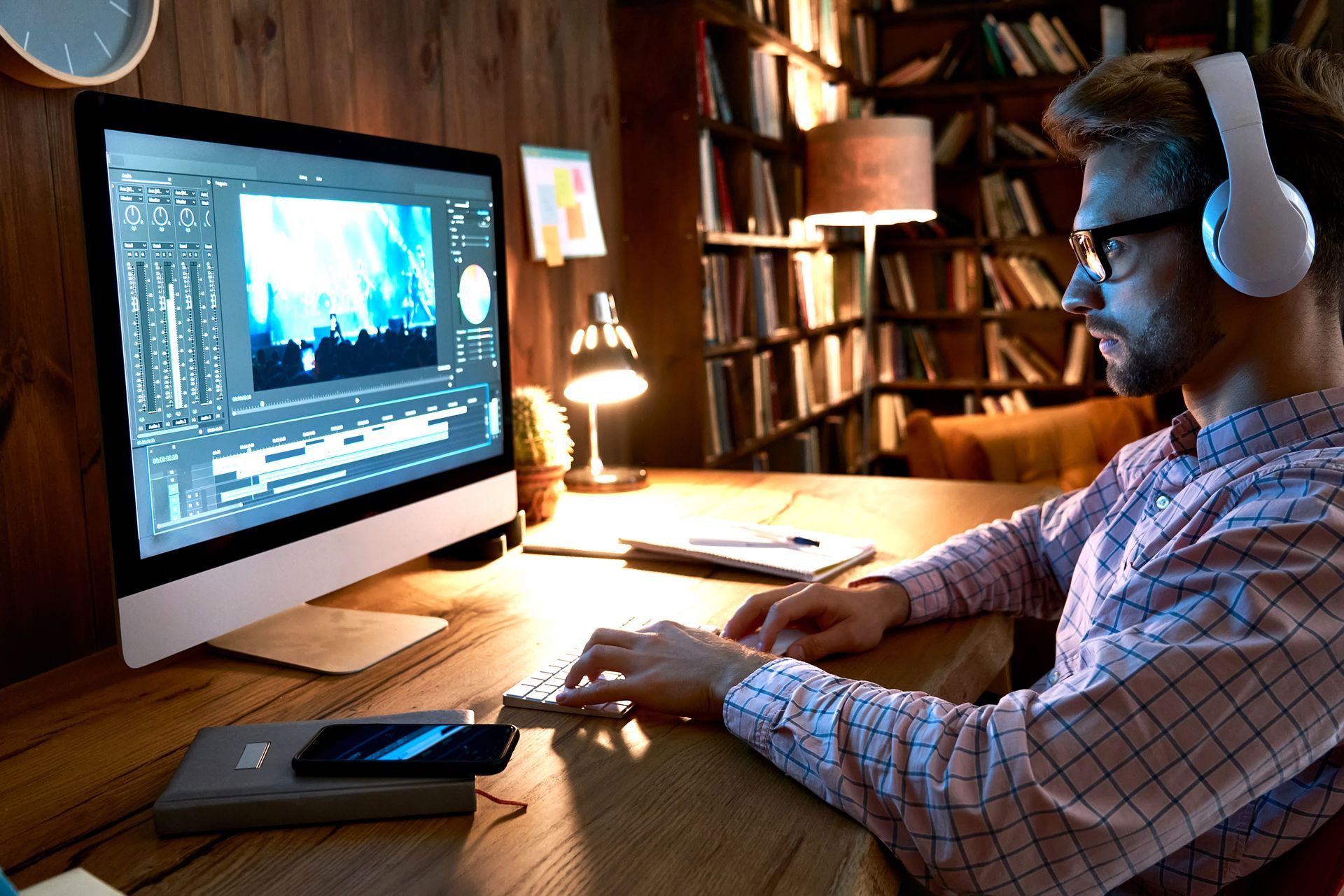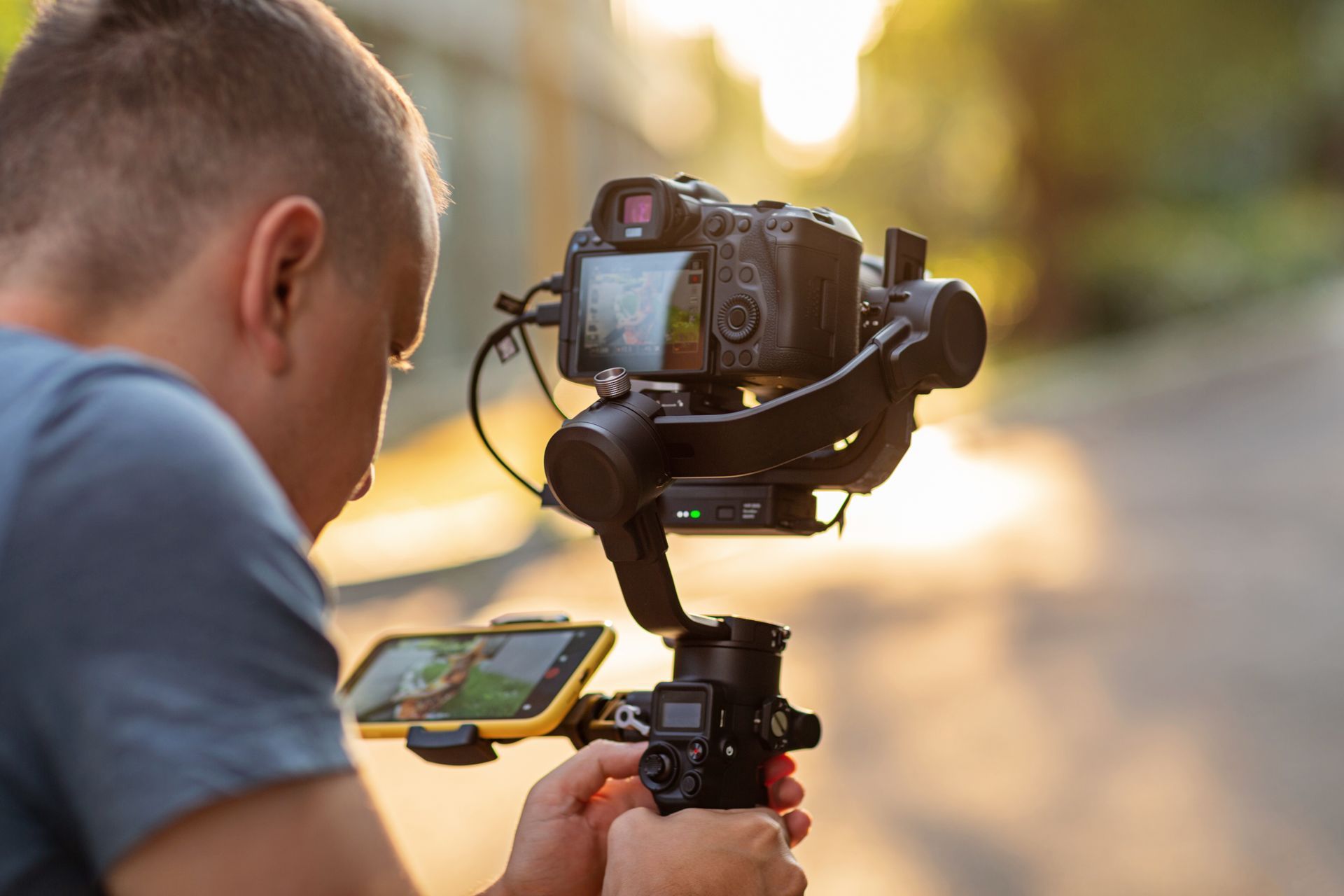Video content is now a crucial aspect of our daily lives, used for various purposes like crafting engaging YouTube videos, sharing cherished moments on social platforms, and creating polished advertisements. This dynamic medium enables us to express our creativity, convey narratives, and establish connections with our viewers. To enhance your videos and make them truly memorable, harnessing the potential of video editing, primarily through the addition of music, is essential.
What is Video Editing?
Video editing is modifying and reorganizing video footage to create a finished product that connects with your target viewers. It encompasses multiple methods, including cutting clips, using transitions, applying effects, and, notably, including music to improve the overall impact. The skill of video editing serves as a doorway to crafting a diverse range of content, from blockbuster movies and TV series to captivating commercials, music videos, and compelling social media snippets that hold our attention as we scroll.
Why Add Music to Videos?
Music is not just an afterthought in video production; it's a pivotal component that can transform an ordinary video into an extraordinary one. Here's why adding music to your videos is paramount:
Enhanced Viewing Experience
Music can engage viewers and keep them captivated throughout the video. It adds an element of enjoyment and excitement, making your content more immersive.
Setting the Mood and Tone
Music possesses the incredible power to express emotions, establish the atmosphere, and shape the mood of your video. Whether you're presenting a touching moment, an action-packed scene, or a humorous situation, the appropriate music can effectively transport your audience to the intended emotional state.
Highlighting Key Moments
Music is a spotlight in your video, emphasizing critical moments, transitions, or highlights. It guides your audience's attention, ensuring they get all the most essential parts of your content.
Creating Rhythm and Pace
Just like a musical composition, a video has its rhythm. Music can provide the heartbeat that regulates the pace of your video, helping it flow smoothly from one scene to another.
Adding Emotional Impact
Whether you want to make your audience laugh, cry, or feel inspired, music is a powerful tool to amplify emotions and add depth to your storytelling.
Boosting Memorability
Combining visuals and music can etch your content into your audience's memory. A well-chosen soundtrack can leave a lasting impression, making your video more shareable and unforgettable.
Different Ways to Add Music to Videos on Android
Having grasped the importance of music in videos, let's delve into how you can incorporate music into your Android videos. Fortunately, there are numerous approaches available to you:
Video Editing Apps
One of the favored methods for adding music to your Android videos is through video editing apps. These applications typically feature integrated music libraries, enabling you to explore and pick the ideal soundtrack. Additionally, you can import your music files from your device, granting you complete authority over the audio in your videos.
Video Merging Apps
If you want to merge multiple video clips while adding music and other effects, video-connecting apps are your solution. They provide a seamless way to combine various elements into a cohesive video.
Screen Recording
In specific scenarios, you should record your video screen while playing music in the background. This method is beneficial for creating video tutorials or other instructional content where you need to explain something while demonstrating it in action.
Adding Music to Videos Using the Built-In Video Editor on Android: A Step-By-Step Guide
Step 1: Open the Video Editor App on Your Android Device
Begin by unlocking the potential of your Android device. Locate and open the video editor app, often pre-installed on your smartphone or available for download from the app store. This app is your gateway to video creativity.
Step 2: Select the Video You Want to Add Music to
After opening the video editing app, go to your video library and select the video you want to improve with music. The video editor will offer a user-friendly interface to manage your video files easily.
Step 3: Tap the "Music" Icon
Inside the video editor, locate the "Music" icon, your gateway to the realm of soundscapes. This is where the enchantment starts as you get ready to synchronize visuals and audio seamlessly.
Step 4: Select the Music File You Want to Add to Your Video
After enabling the "Music" feature, you can pick the perfect video soundtrack in Android's built-in video editor, which typically offers access to a library of music and sound effects and the option to import music files from your device. This high level of customization guarantees that your video's soundtrack aligns precisely with your creative vision.
Step 5: Trim the Music to the Desired Length and Adjust the Volume
A hallmark of professional video editing is precise control. The built-in video editor allows you to trim the selected music to the desired length. Tailor the soundtrack to match the pace of your video and ensure it hits all the right notes. You can also adjust the volume, balancing the audio with your video's original sound or dialog. This level of granularity empowers you to craft a harmonious audio-visual experience.
Step 6: Tap the "Save" Button
With your video and its newfound musical companion in perfect harmony, it's time to bring your creation to life. In most cases, this involves tapping the "Save" button finalizing the fusion of visuals and music. Some apps may use different terminology, such as "Export" or "Share," but the goal remains the same – to save your video with its newly added music.
Different types of music files can be added to videos.
MP3 (MPEG Audio Layer-3)
MP3 is a ubiquitous and versatile audio file format in video editing. It's a lossy compression format that manages to strike a balance between audio quality and file size. Most video editing apps support MP3 files, making them incredibly convenient for adding music to your videos. The compact size of MP3 files ensures easy sharing and uploading online, a crucial advantage in today's digital landscape.
AAC (Advanced Audio Coding)
For those who prioritize pristine audio quality, WAV stands as the preferred option. Unlike MP3 and AAC, WAV is an uncompressed audio format that conserves the complete sound spectrum. This format delivers the highest sound quality, perfect for professional video endeavors, music videos, and any situation where audio fidelity takes precedence. Nevertheless, it's essential to acknowledge that WAV files tend to be larger, potentially affecting storage and sharing possibilities.
OGG (Ogg Vorbis)
OGG, a free and open-source audio format, offers commendable sound quality while keeping file sizes relatively small. It strikes a balance between audio fidelity and file efficiency, making it a versatile option for video editing. OGG files are compatible with various video editing applications and prove especially handy in achieving an equilibrium between quality and accessibility.
FLAC (Free Lossless Audio Codec)
FLAC is the solution for audiophiles and individuals pursuing audio perfection. It's a lossless audio compression format that preserves sound quality identical to the original uncompressed audio file. FLAC files are the top pick for those who demand impeccable audio experiences. Nevertheless, these files tend to be larger, making them best suited for projects where prioritizing quality over file size is crucial.
M4A (MPEG-4 Audio)
M4A is an audio file format commonly linked with Apple devices. M4A files can contain either AAC or ALAC (Apple Lossless Audio Codec) audio. If you're editing videos on an Apple device, M4A files can seamlessly integrate into your projects. They balance audio quality and file size, ensuring compatibility and a pleasant listening experience.
How to edit music files for use in videos
In video editing, the soundtrack is your secret ingredient to creating memorable and engaging content. But what if the music file you've chosen needs some fine-tuning to match your video perfectly? There are numerous ways to edit music files, allowing you to tailor them to your project's requirements. Here are some everyday tasks involved in editing music files for use in videos:
Trimming the File
Frequently, you may encounter situations where the length of your chosen music file needs to match the duration of your video. In these instances, you might have to trim the music file for a seamless fit. Video editing apps typically offer easy-to-use tools that allow you to cut music precisely, ensuring it complements your video's pace and mood.
Adding Sound Effects
To take your video to the next level of engagement, consider adding sound effects. Sound effects can elevate your storytelling and increase the allure of your content.
Creating Fade-In and Fade-Out Effects
Music that abruptly starts or stops can be jarring. To remedy this, you can employ fade-in and fade-out effects. These effects ensure the music begins and ends gradually, creating a more polished and pleasing auditory experience. Most video editing apps offer user-friendly options for applying these effects to your music.
Adjusting the Volume
Balancing the audio is crucial. You want your music to be audible but not overpowering. Video editing apps typically provide volume control tools that enable you to adjust the music's volume precisely. This ensures your audience can hear the soundtrack without drowning out essential dialogue or other audio elements in your video.
Changing the Tempo or Pitch
Sometimes, the mood of your video demands a specific tempo or pitch alteration in the music. If the music doesn't perfectly match your video's rhythm and emotional tone, you can modify the tempo or pitch. This adaptability empowers you to craft a harmonious audio-visual experience that deeply connects with your audience.
Mixing Multiple Audio Tracks in Your Video
On occasion, achieving the desired impact in your video may necessitate multiple audio tracks. Layering numerous audio tracks can create a rich and intricate soundscape. To do this, you'll need a video editing app that facilitates audio mixing.
How to export videos with music
Exporting your video with the integrated music is a straightforward process:
• Launch your video editing application.
• Navigate to the export or save option for your video.
• Pick the appropriate video format, like MP4, MOV, or AVI, based on your requirements.
• Ensure that the chosen configuration is compatible with the target playback device.
• Adjust the video quality setting to match your preferences. If you intend to share your video online, consider selecting a lower video quality setting to reduce the file size for easier uploading.
Adding music to videos using third-party video editing apps for Android
Although Android's native video editor provides excellent functionality, third-party apps offer even more extensive capabilities. Here are some noteworthy alternatives:
Audacity
With Audacity, beginners can efficiently utilize a user-friendly video editing solution. This versatile software empowers users to import, edit, and export video files, incorporate audio tracks, fine-tune volume, apply fade-in/out transitions, and experiment with video effects, including adjustments to brightness, contrast, and saturation.
Adobe Audition
Adobe offers commercial audio editing software, available for both Windows and Mac, which provides a comprehensive range of features for audio editing. Its professional-grade tools enable precise control over sound.
WavePad
WavePad is another commercial audio editing software compatible with Windows and Mac. It's user-friendly and suitable for both beginners and experienced audio editors.
Wondershare FilmoraGo
This Android video editing app includes fundamental audio editing features, offering a convenient, all-in-one solution for your video and audio requirements.
InShot
The Android video editing app InShot, includes essential audio editing features that enhance the versatility of your video projects.
These third-party applications cater to different levels of expertise, serving both beginners and professionals. Depending on your requirements and skill level, you can explore these options to unlock advanced audio editing features and refine your videos.
Adding Sound Effects to Your Videos
Sound effects are your gateway to injecting excitement, engagement, and depth into your videos. Numerous free sound effects can be accessed online through SoundBible and Freesound. To integrate sound effects into your video, follow these steps:
• Use a video editing app that supports audio tracks.
• Import the desired sound effects into your project.
• Adjust the volume and balance of the audio tracks to your liking. Ensure that the sound effects seamlessly integrate with the video's original audio and the added music.
Adding sound effects calls for creativity and a discerning ear for storytelling. Whether it's the gentle chirping of birds in a peaceful outdoor setting or the deafening roar of an epic battle, sound effects can amplify the impact of your videos.
Tips for Adding Music to Videos on Android
Here are some essential tips to ensure your music addition process is a resounding success:
• Choose music files compatible with your video editing app and appropriate length.
• Adjust the volume of the music and video to create a harmonious balance.
• Trim or edit music files as needed, whether for duration, sound effects, or fade-in/fade-out effects.
• Finally, export your video with the music to create a cohesive audio-visual experience.
Conclusion
In this extensive exploration of video editing on Android, we've delved into the core elements of integrating music and sound effects into your videos. You've gained insights into refining music files, exploring third-party apps, and imbuing your videos with the enchantment of sound effects. Armed with these skills and knowledge, you can craft compelling video content that deeply connects with your audience.

Get total clarity on your video marketing and paid media with our FREE comprehensive data audit.







